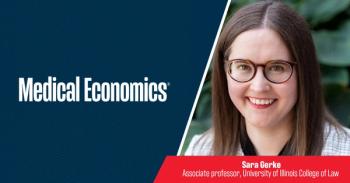
New curriculum teaches cost considerations
Under a new course of study, internal medicine residents will learn how to help patients cut healthcare costs. Could these tools change the way you practice medicine, too?
The
“Physicians can no longer afford to bury their heads in the sand and say that it’s not their business to know what things cost. They have to know. We have to give them the tools to be able to at least estimate [costs],” Cynthia D. Smith, MD, FACP, tells Medical Economics exclusively. She is the ACP’s senior medical associate for content development and the lead author of “Teaching High-Value Cost-Conscious Care to Residents: The AAIMACP Curriculum,” published online in
The new curriculum will be available online when the 2012–2013 academic year begins. It consists of 10 1-hour interactive sessions that can be incorporated into existing academic programs and features slides, discussion questions, and a guide for facilitators. Each session concentrates on actual inpatient or outpatient cases.
“It’s much less academic and much more hands-on, practical tools, because that’s the way residents learn,” Smith says.
Students will learn to consider how the cost of tests and medications affects their patients. They also will receive the experience and confidence they will need when they must educate patients on the reasons for the care they recommend, Smith says.
“We’re talking about real money. It’s not just for [patients] who have nothing,” she adds. “People will still forego care if they’re well-to-do because that’s not what they want to spend their money on.”
The program directors who participated in the curriculum’s development have committed to using it. The curriculum also is available to other internal residency program directors.
The AAIM–ACP curriculum committee will collect participants’ feedback and use metrics to assess its use and effectiveness. The committee also will compare the high-value cost-conscious care sub score in programs that have and have not used the curriculum and track these data over a 3-year period.
If the curriculum proves successful, the organizations may expand its use for other specialties and adapt its format so that medical students, residents in other specialties, fellows, and practicing physicians can use it, too.
“The momentum for this has been growing,” Smith says. “It’s such an exciting time because of the Affordable Care Act [ruling]. Now everybody realizes that if we’re going to continue on this road, we have to figure out how to do things leaner and smarter.”
Newsletter
Stay informed and empowered with Medical Economics enewsletter, delivering expert insights, financial strategies, practice management tips and technology trends — tailored for today’s physicians.






